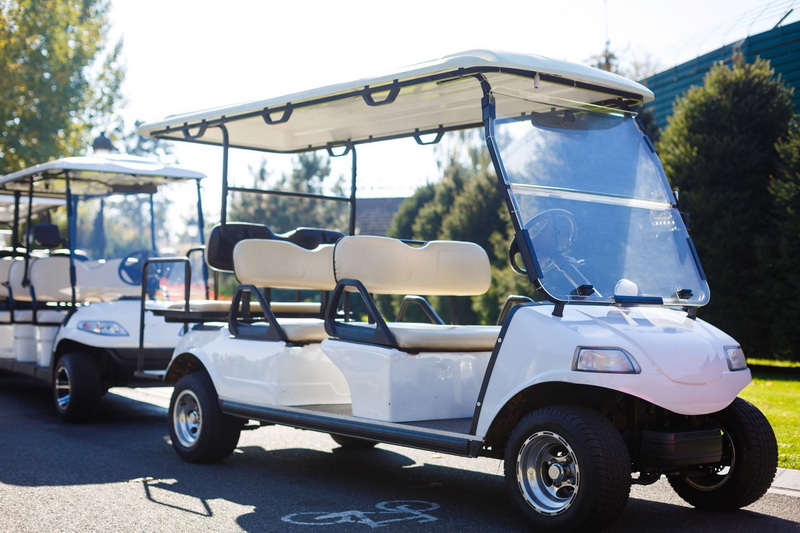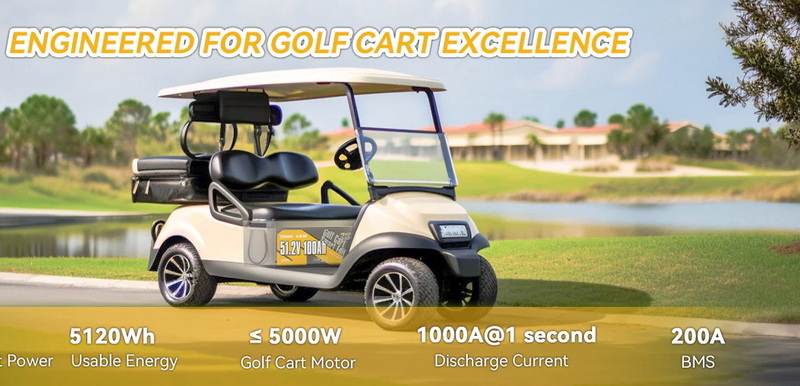Content Menu
● Understanding Golf Cart Power Systems
>> Battery Types and Their Capacities
● How Much Power Does a Golf Cart Use?
● Motor Power Ratings
● Factors Affecting Efficiency
● Charging an Electric Golf Cart
● Benefits of Electric Golf Carts
● Conclusion
● FAQ
>> 1. What is the average range of an electric golf cart on a single charge?
>> 2. How long does it take to charge an electric golf cart?
>> 3. Can I use my electric golf cart in rainy conditions?
>> 4. How often should I maintain my electric golf cart?
>> 5. What factors influence the speed of an electric golf cart?
Electric golf carts have become increasingly popular for their efficiency and eco-friendliness. Understanding the power consumption of these vehicles is crucial for users, whether for recreational purposes or as a means of transportation in various settings. This article will delve into the kilowatt usage of electric golf carts, exploring their battery systems, motor specifications, and overall energy consumption.

Understanding Golf Cart Power Systems
Electric golf carts typically operate using a battery system that provides the necessary power to the motor. The two most common voltage systems are 36 volts and 48 volts. The choice between these systems often depends on the cart's intended use, performance requirements, and battery capacity.
Battery Types and Their Capacities
1. Lead-Acid Batteries:
- Commonly used in traditional golf carts.
- Typically rated at 6 volts each, requiring multiple batteries to achieve the desired voltage (e.g., six batteries for a 36-volt system).
- Average capacity is around 200 amp-hours (Ah).
2. Lithium-Ion Batteries:
- Gaining popularity due to their longer lifespan and faster charging capabilities.
- Fewer batteries are needed compared to lead-acid systems due to higher energy density.
How Much Power Does a Golf Cart Use?
The power consumption of an electric golf cart varies based on several factors:
- Terrain: Steeper terrains require more power.
- Weight Load: Heavier loads increase energy consumption.
- Speed: Higher speeds lead to greater energy use.
On average, a typical electric golf cart will consume about 3-4 kilowatt-hours (kWh) for an 18-hole round of golf. This translates to approximately 2-3 kWh per day under regular usage conditions.

Motor Power Ratings
The power output of electric golf cart motors typically ranges from 3,000 to 5,000 watts (or about 4 to 7 horsepower). This range is sufficient for most applications, allowing carts to reach speeds between 15 to 25 miles per hour depending on terrain and load.
| Motor Type | Power Output (Watts) | Horsepower Equivalent |
| Standard Motors | 3,000 - 5,000 | 4 - 7 |
| High-Performance Motors | 5,000 - 10,000 | 7 - 13 |
Factors Affecting Efficiency
Several factors can influence the efficiency of an electric golf cart:
- Battery Age: Older batteries may not hold a charge as effectively.
- Temperature: Extreme temperatures can affect battery performance.
- Driving Habits: Aggressive driving can lead to higher energy consumption.
Charging an Electric Golf Cart
Charging times vary based on the battery type and charger used. Generally:
- Lead-Acid Batteries: Require about 8-12 hours for a full charge.
- Lithium-Ion Batteries: Can charge much faster, often within 4-6 hours.
Benefits of Electric Golf Carts
Electric golf carts offer numerous advantages:
- Eco-Friendly: Produce no emissions during operation.
- Cost-Efficient: Lower operating costs compared to gas-powered carts.
- Quiet Operation: Reduced noise pollution enhances the golfing experience.
Conclusion
Understanding how many kilowatts an electric golf cart uses is essential for optimizing its performance and ensuring efficient operation. With average power consumption ranging from 2 to 4 kWh per day, users can make informed decisions regarding battery maintenance and charging practices. As technology advances, electric golf carts are becoming more efficient and user-friendly, making them an excellent choice for both recreational and practical applications.

FAQ
1. What is the average range of an electric golf cart on a single charge?
The average range is typically between 20 to 40 miles, depending on the battery type and load conditions.
2. How long does it take to charge an electric golf cart?
Charging time varies; lead-acid batteries generally take 8-12 hours, while lithium-ion batteries can take around 4-6 hours.
3. Can I use my electric golf cart in rainy conditions?
Yes, but it's advisable to avoid deep water as it may damage electrical components.
4. How often should I maintain my electric golf cart?
Regular maintenance is recommended every few months, including checking battery levels and tire pressure.
5. What factors influence the speed of an electric golf cart?
Speed is influenced by motor power, terrain type, weight load, and battery condition.










































